Step into Tomorrow with VR: Crafting Unforgettable Customer Journeys
As Apple announced its new Vision Pro, businesses have identified VR as a game-changer, opening up a new realm of immersive experiences for consumers.
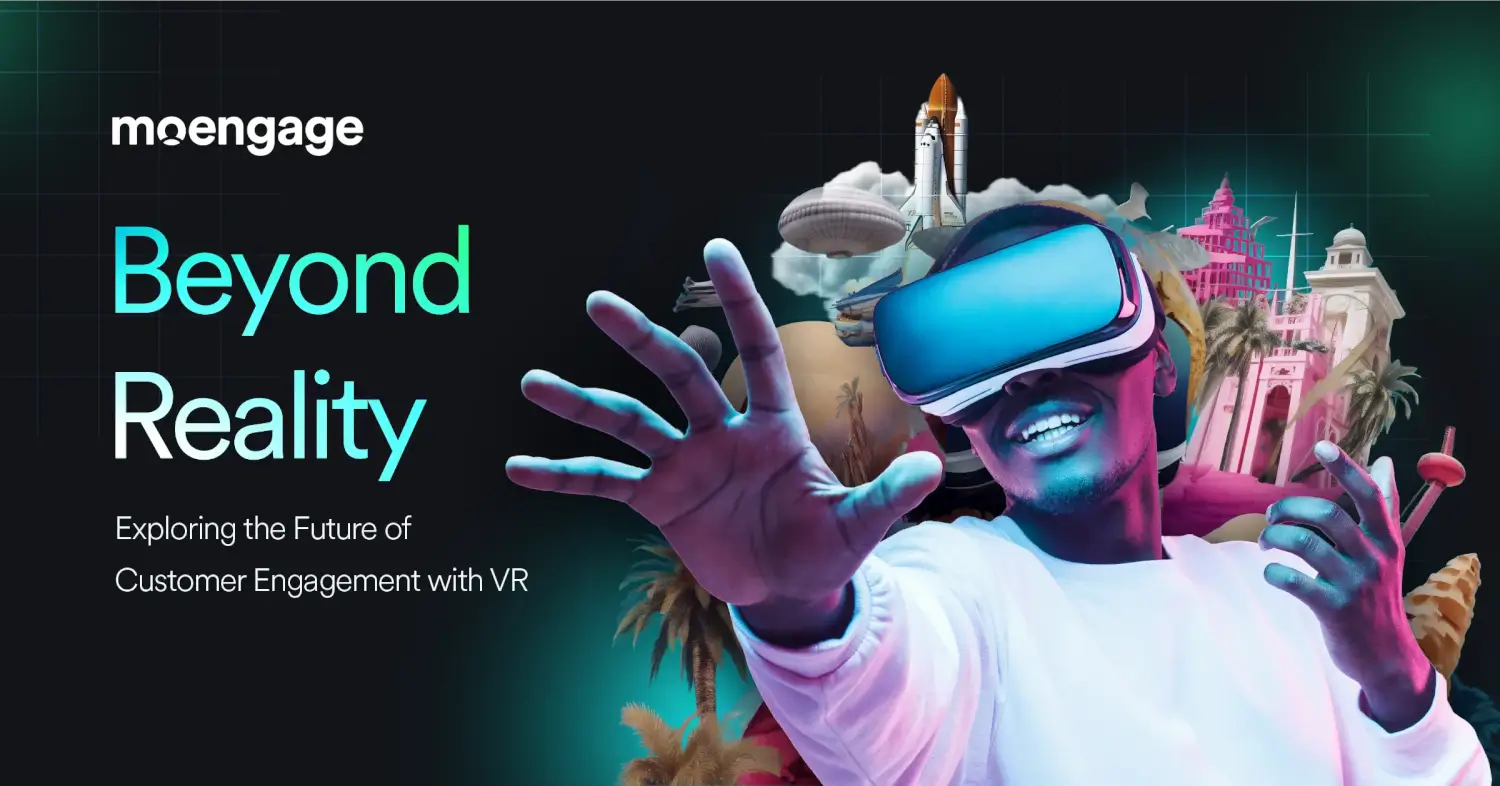
Reading Time: 7 minutes
Introduction
After Apple announced its new Vision Pro headset at WWDC 2023 (to be launched in 2024), businesses are seeking innovative ways to enhance customer engagement. Virtual Reality (VR) has emerged as a game-changer, opening up a new realm of immersive experiences for consumers. From gaming to education, VR is going to transform various industries, including customer engagement.
In this blog post, we will explore how VR can be harnessed to captivate audiences, increase brand loyalty, and create memorable interactions. With a nod to the highly anticipated Apple Vision Pro, we will delve into the potential impact of this groundbreaking device and share relatable examples of where VR can significantly impact a brand or industry.
The Power of Virtual Reality
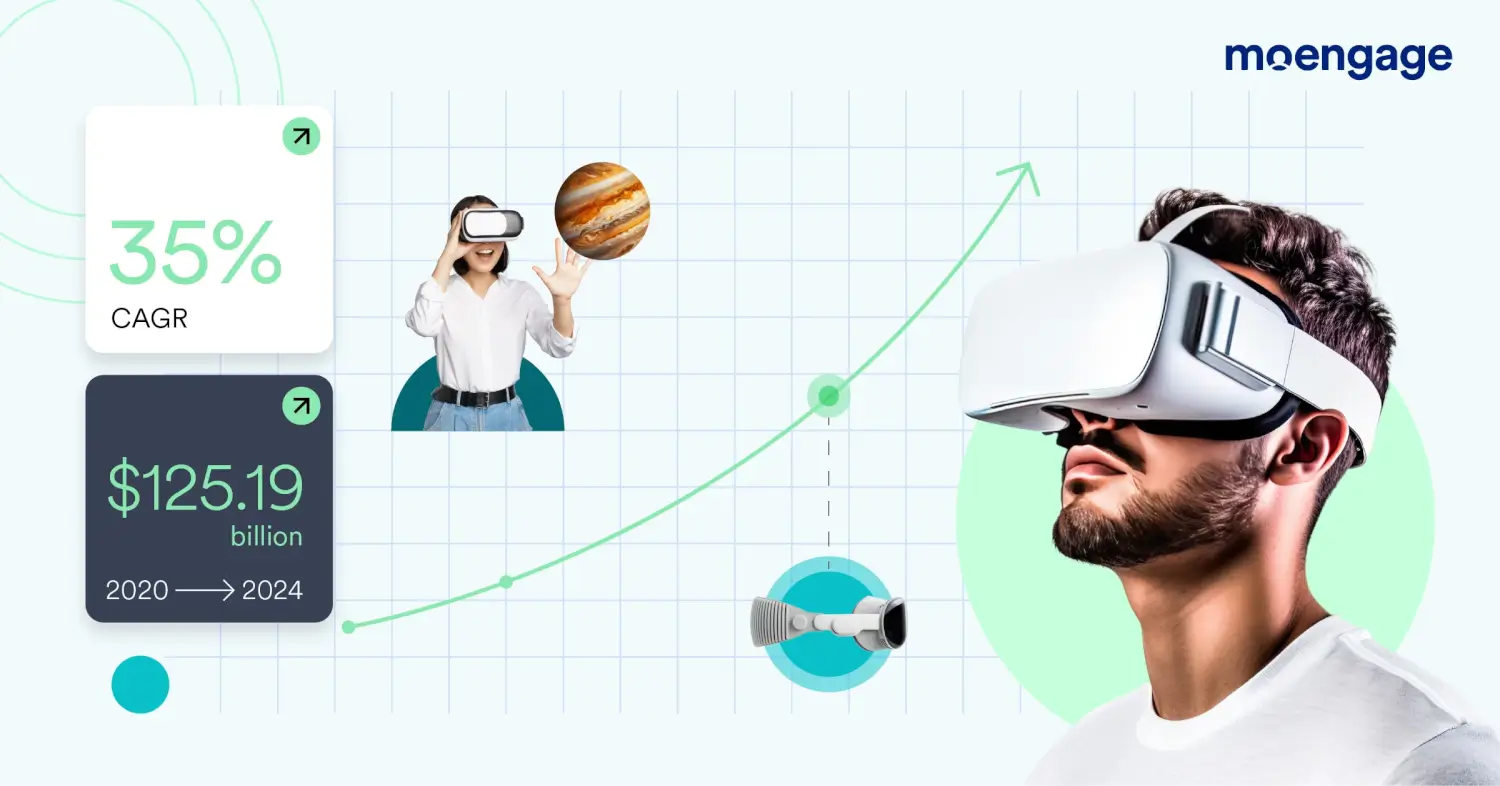
Virtual Reality has taken the world by storm, transporting consumers into entirely new dimensions of reality. By wearing a VR headset, individuals can immerse themselves in lifelike environments where they can see, hear, and even interact with virtual objects. This technology offers a level of engagement that traditional mediums simply cannot match, making it a potent tool for businesses to captivate their customers.
According to Business Wire, the market size for AR and VR is expected to grow at a CAGR of 35%. This essentially means that the AR and VR market will grow by $125.19 billion from 2020 to 2024.
Enhancing Customer Engagement with VR
Immersive Product Demonstrations
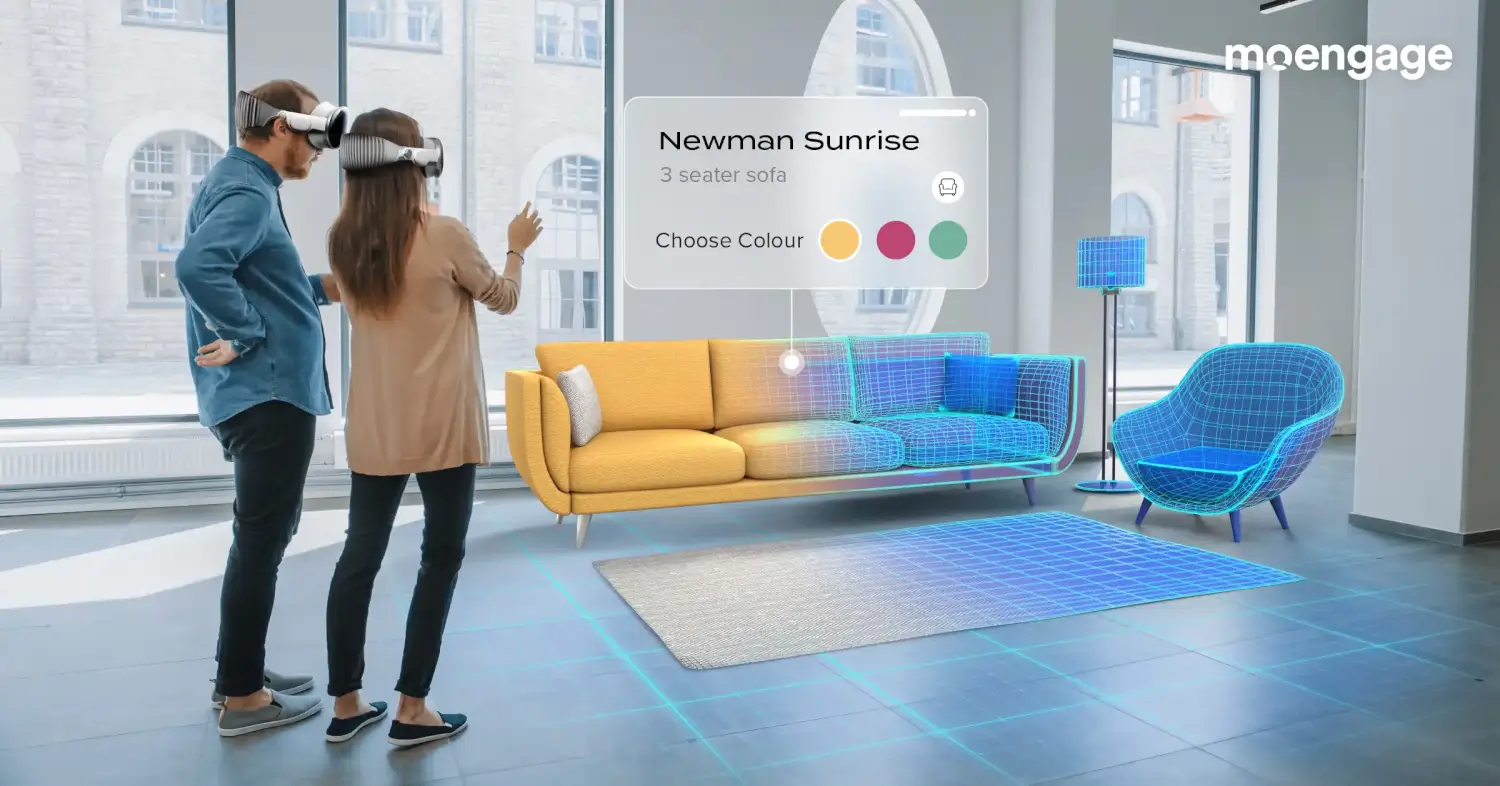
Imagine being able to try out a product without leaving your home. VR allows businesses to offer virtual product demonstrations that let customers experience their personalized offerings first-hand. Whether it’s test driving a car, trying on virtual fashion items, or exploring the features of a new gadget, VR enables customers to interact with products before making a purchase. This interactive and immersive experience builds excitement and confidence in the product, leading to increased engagement and conversion rates.
Virtual Showrooms: A Shopper’s Paradise
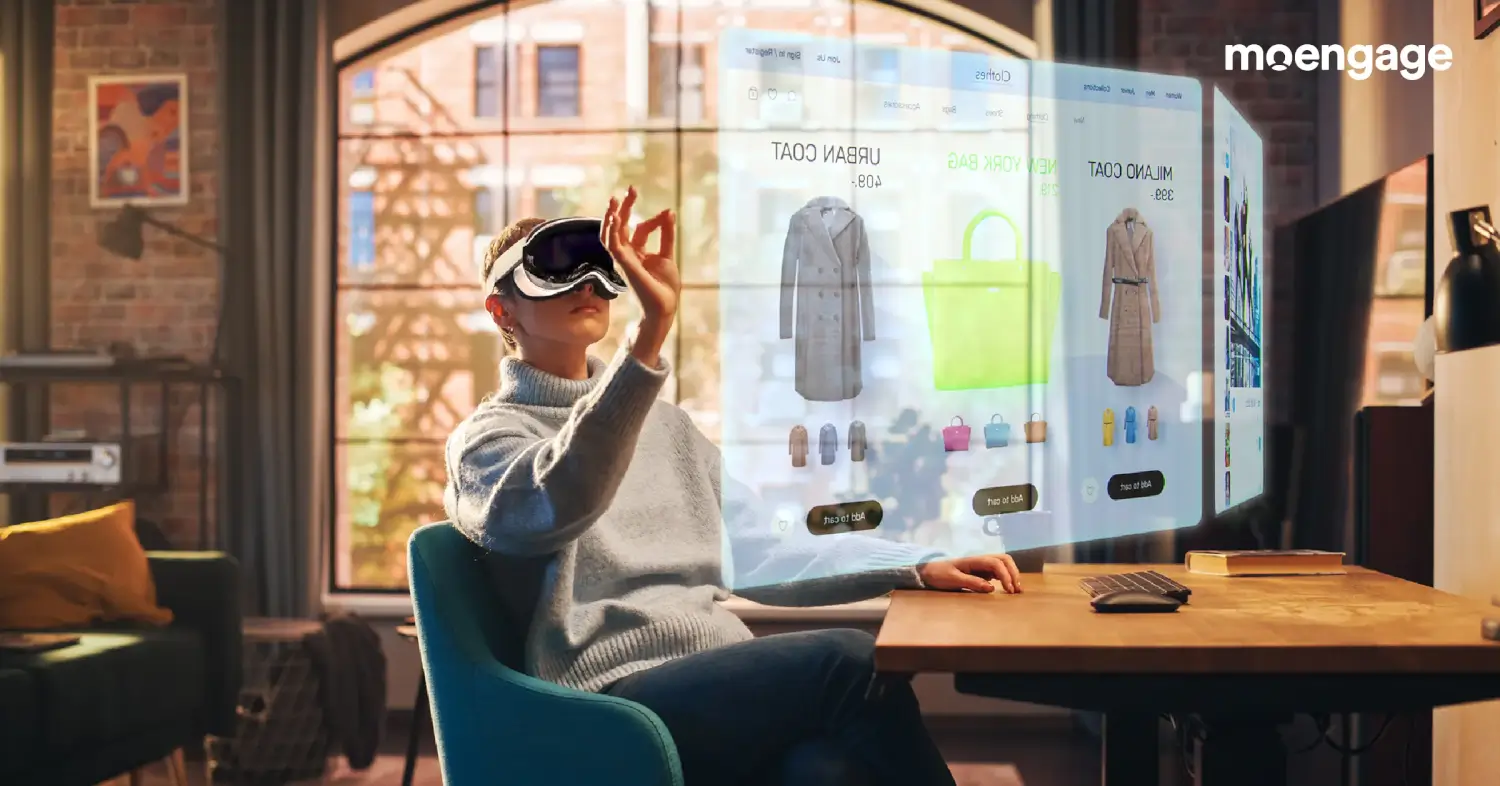
Brick-and-mortar stores have their limitations, but VR removes those barriers. With VR showrooms, customers can explore a vast array of products in a virtual environment that replicates a physical store. They can browse, touch, and examine items as if they were physically present. The Apple Vision Pro, with its advanced graphics and intuitive controls, promises to take virtual shopping to new heights. Customers can virtually walk through beautifully designed virtual stores, interact with products, and even get personalized recommendations based on their preferences.
In a nutshell, this is where the ‘Try before you buy’ concept can be optimized to perfection, with shopping apps being able to show how a clothing item would look on you, based on your body’s measurements.
| “The power of Virtual Reality lies in its ability to dissolve the boundaries between online and offline shopping, creating a seamless blend of both worlds. As technology evolves, so does the way we shop. Virtual Reality is not just the future; it’s the present, offering customers an unparalleled journey through the digital aisles of tomorrow.”
– Suhaib Anwar, Head of Growth and Martech, MyDeal |
Virtual Events: Breaking Barriers
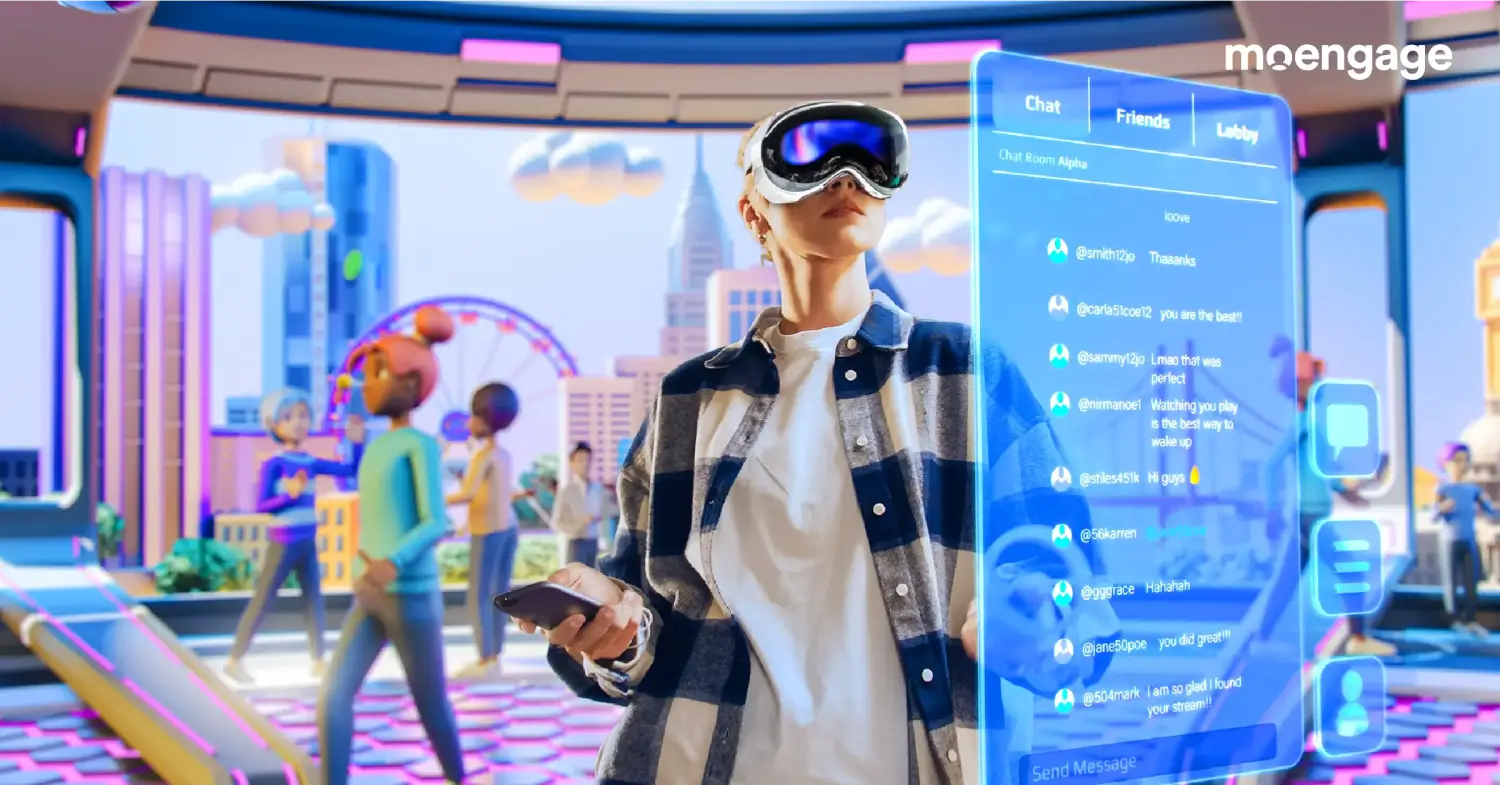
In a world where physical events have become limited, VR offers a compelling alternative. Brands can host virtual events that transcend geographical boundaries, allowing attendees from all over the world to come together in a shared virtual space. From product launches to conferences, virtual events provide an immersive platform for networking, knowledge sharing, and entertainment. Attendees can explore virtual exhibition halls, engage in interactive sessions, and even interact with virtual avatars of their favorite speakers or influencers.
VR Storytelling: Emotion in Action
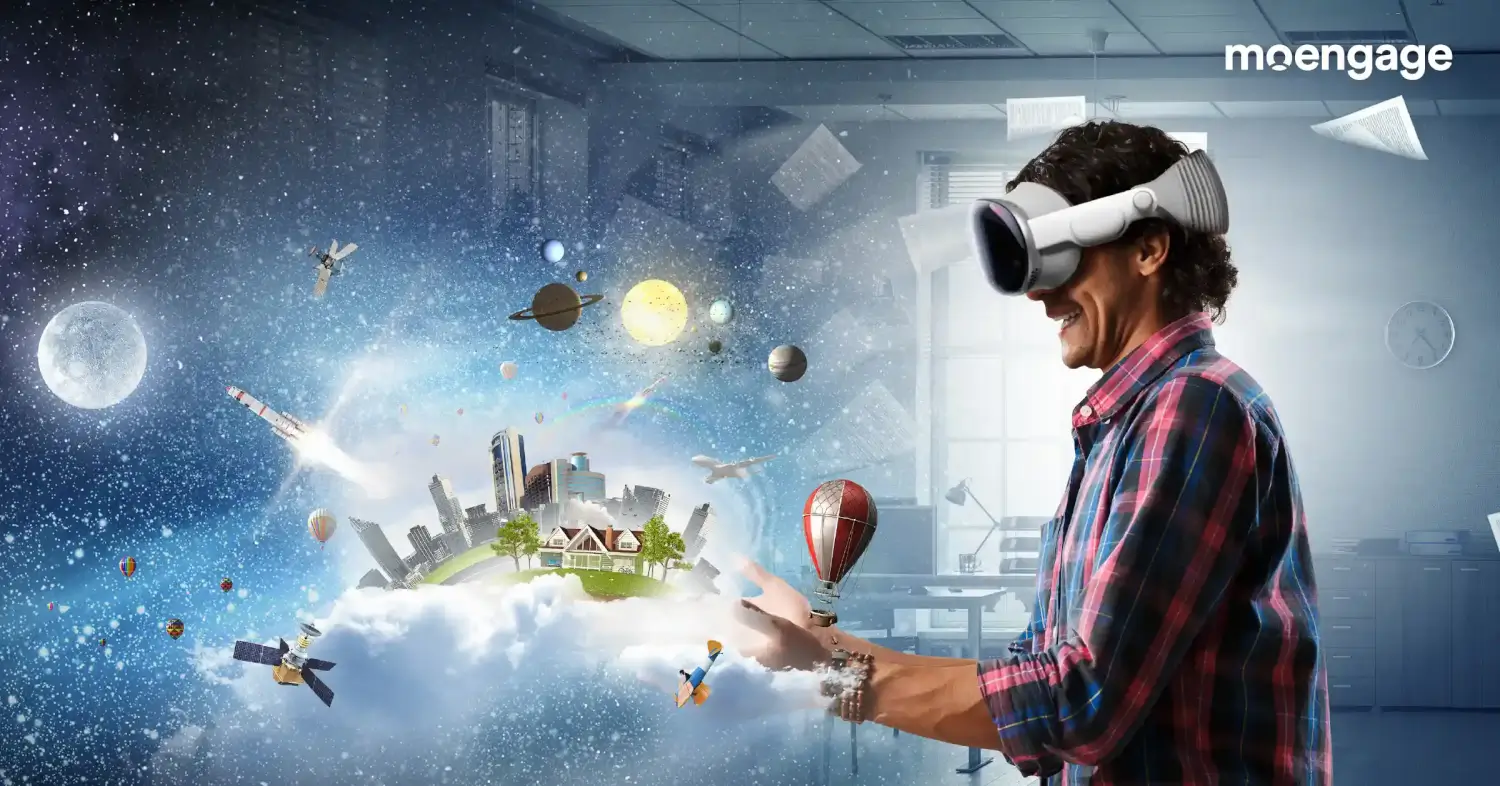
Storytelling has always been a powerful tool for brands to connect with their audience, and VR takes storytelling to a whole new level. Through VR experiences, companies can transport customers into the heart of their narratives, making them active participants rather than passive observers. Whether it’s a virtual tour of a destination, a historical reenactment, or an emotional brand story, VR enables brands to evoke deep emotions and forge lasting personalized connections with their customers.
Interactive Training and Support

VR is not just about selling products; it can also be leveraged for customer support and training purposes, essentially creating a better overall customer experience. Companies can create virtual training modules to educate customers on product usage or troubleshooting techniques. From assembling furniture to operating complex machinery, VR simulations can offer step-by-step guidance in a realistic and engaging manner. This not only enhances customer satisfaction but also reduces support costs and improves overall brand perception.
The Apple Vision Pro: Raising the Bar
Unleashing Creative Possibilities
The upcoming Apple Vision Pro is generating tremendous excitement in the tech world. Known for their commitment to innovation, Apple’s foray into VR is set to push the boundaries of what’s possible. With advanced features such as high-resolution displays, precise motion tracking, and haptic feedback, the Apple Vision Pro promises an unparalleled level of immersion and realism. This opens up endless creative possibilities for businesses to develop cutting-edge VR experiences that truly captivate their customers.
Gaming: A New Frontier
Gaming has always been at the forefront of VR adoption, and the Apple Vision Pro aims to take gaming experiences to the next level. Imagine stepping into a virtual world where you can engage in thrilling adventures, solve puzzles, and compete with friends in multiplayer games. The Apple Vision Pro’s powerful hardware and seamless integration with Apple’s ecosystem are expected to revolutionize the gaming industry, enticing both casual gamers and hardcore enthusiasts alike.

An already existing example of this is the Sony Playstation VR2 headset with games like Horizon: Call of the Mountain, Gran Turismo 7, Resident Evil: Village, Transformers: Beyond Reality, etc. Sony has been able to make its customers feel like they are actually in the game itself, making it a super-realistic experience. From motion sensors that you can pull back a bow string to shoot an arrow to the beautifully developed world where you can look 360° in any direction, VR gaming is only set to grow in time.
While mobile VR gaming hasn’t hit the heights of its console counterparts, Apple’s inevitable foray into this market guarantees an influx of new mobile VR gamers in the years to come.
VR Use Cases for Different Industries
While we’ve covered how brands in the gaming and retail/E-commerce can leverage VR, here are a few more industry-wise use cases:
| Industry | VR Use case |
| Travel and Hospitality | Customers can virtually explore destinations from the comfort of their homes |
| Real Estate | Customers can view every nook and cranny of the property before making the purchase, especially if they live far away |
| Media and Entertainment | Customers can experience movies and TV shows in VR as though their favorite celebs are really next to them |
| Ed Tech | Students can retain better knowledge with a virtual lesson simulator |
Overcoming Challenges and Building Trust
While the potential of VR in customer engagement is vast, businesses must also be aware of the challenges that come with it. One major hurdle is the cost associated with developing VR experiences. However, as technology advances and VR becomes more mainstream, costs are expected to decrease, making it accessible to a wider audience.
Another challenge lies in building trust. Some customers may be hesitant to embrace VR due to concerns about privacy, motion sickness, or the overall learning curve. To overcome these challenges, businesses must prioritize customer education, offer seamless and intuitive experiences, and address privacy concerns transparently. By doing so, they can build trust and encourage wider adoption of VR in customer engagement strategies.
The Future of Customer Engagement with VR
The potential of VR in customer engagement still needs to be explored. As technology continues to advance, we can expect more sophisticated VR devices with enhanced capabilities. The integration of VR with other emerging technologies like augmented reality (AR) and artificial intelligence (AI) will unlock new possibilities and further enrich customer experiences.
In the future, we might see virtual reality becoming a standard tool in industries such as real estate, healthcare, and education. From virtual property tours to immersive medical simulations and interactive learning environments, VR will redefine how businesses engage with their customers, providing unique and unforgettable experiences.
The Prerequisites to Transforming Customer Engagement with VR
With its ability to create immersive and interactive experiences, VR is poised to revolutionize the way businesses engage with their customers and employees, offering a seamless blend of realism and digital interaction.
However, it is also worth noting that VR is only the icing on top of the customer engagement cake. To give your customers the best possible VR experience, you must have a solid foundation for your strategy. The best way to do so is with a customer engagement platform that can offer:
- Deep and detailed segmentation
- Hyper-personalization
- In-depth customer insights and analytics
- AI-powered campaign optimization
- Omnichannel communication
These key functionalities in your customer engagement kitty will help you deliver a more immersive VR experience, boosting acquisition, engagement, and retention.
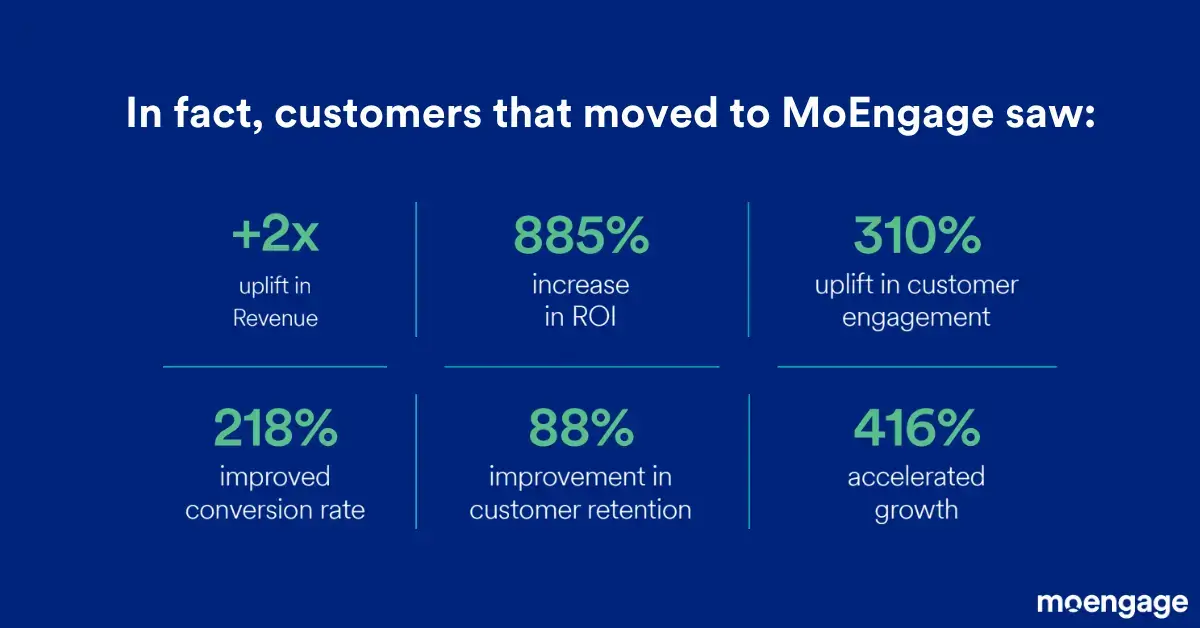
In Conclusion
Virtual Reality has the potential to revolutionize customer engagement by providing immersive and interactive experiences. The highly anticipated Apple Vision Pro, along with other VR devices, will empower businesses to create memorable brand interactions, increase customer loyalty, and stand out in a crowded marketplace.
To stand out and fully realize the value of VR engagement, brands need to follow an insights-led approach to engagement with customer-centricity in mind. An insights-led approach to engagement can help brands-
- Understand customer affinities and preferences
- Reach the right customers at the right time
- Optimize for the right channels
- Make positive business decisions
- Boost customer satisfaction and loyalty
From immersive product demonstrations to virtual showrooms and interactive training, VR offers a range of possibilities that can captivate audiences and drive meaningful engagement. Virtual events and VR storytelling further elevate customer experiences, enabling brands to break barriers and forge emotional connections.
While challenges exist, such as cost and building trust, the future of customer engagement with VR looks promising. As technology continues to evolve, VR will become more accessible, enabling businesses to leverage its potential fully.








